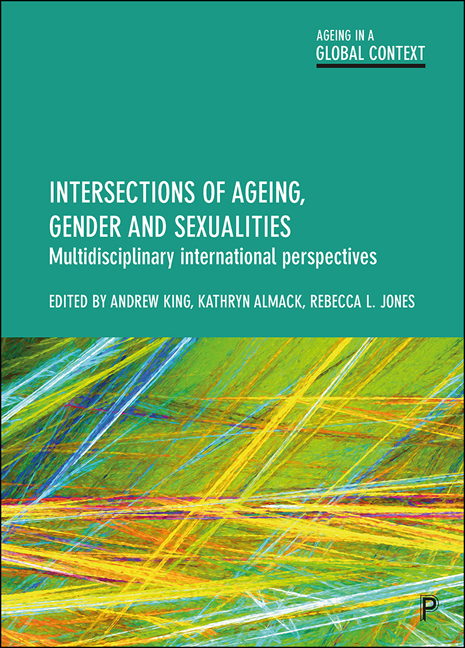twelve - Health and well-being of lesbians, gay men and bisexual people in later life: examining the commonalities and differences from quantitative research
Published online by Cambridge University Press: 27 April 2022
Summary
Introduction
While the complexities and intersections of age, gender and sexualities can be difficult to capture in quantitative studies, findings from quantitative research do relate to majority experiences and general patterns within populations, and hence are important sources of knowledge. However, with the frequent aggregation of people into one LGBT (lesbian, gay, bisexual, transgender and gender diverse) category there is a risk that quantitative research misrepresents the diverse issues and needs of LGBT people.
This chapter argues that careful analysis of quantitative findings is needed to ensure that diversity is respected. Because the focus of much quantitative research is on sexuality, the experiences of transgender, intersex and gender diverse people are not specifically examined here. Instead the chapter centres on the intersection of gender, sexuality and ageing for lesbians, gay men and bisexual (LGB) older people and explores some of the commonalities and differences across these groups in the quantitative findings from international research on health and well-being.
Research on the health and well-being of LGB people
Over the past couple of decades there has been increasing research evidence that LGB people face particular health conditions at an elevated rate compared with the general population. In particular, large probability-based studies and meta-analyses have consistently identified LGB adults as facing an increased risk of most mental health conditions, including depression, anxiety and suicidal ideation (for example, Cochran and Mays, 2009; Lewis, 2009; Chakraborty et al., 2011). Some specific physical health issues are also more prevalent among LGB people. For example, lesbians and bisexual women report higher rates of alcohol and tobacco use (Burgard et al., 2005) and obesity (Simoni et al., 2016) than their heterosexual counterparts. And in all regions of the world, HIV prevalence is substantially higher among men who have sex with men, compared with the general adult male population (Beyrer et al., 2012). Despite these findings there has, until recently, been a major gap in understanding of LGB older people's health and well-being.
Unfortunately, the research on the health disparities faced by LGB people has also been limited by the common treatment of identity categories as unidimensional and independent (Bowleg, 2012).
- Type
- Chapter
- Information
- Intersections of Ageing, Gender and SexualitiesMultidisciplinary International Perspectives, pp. 191 - 208Publisher: Bristol University PressPrint publication year: 2019

